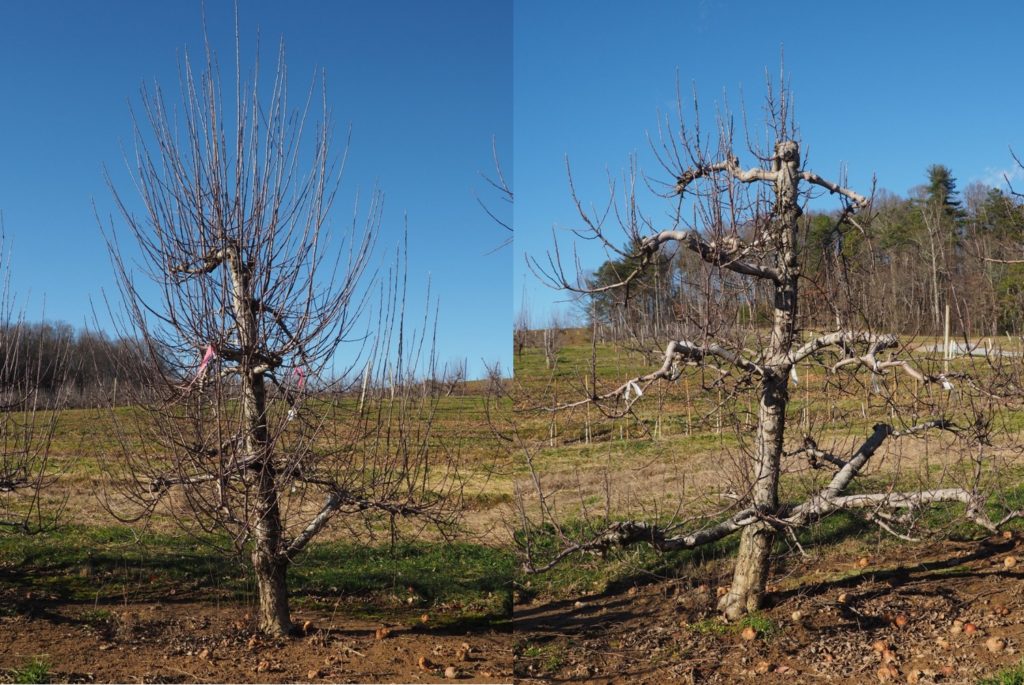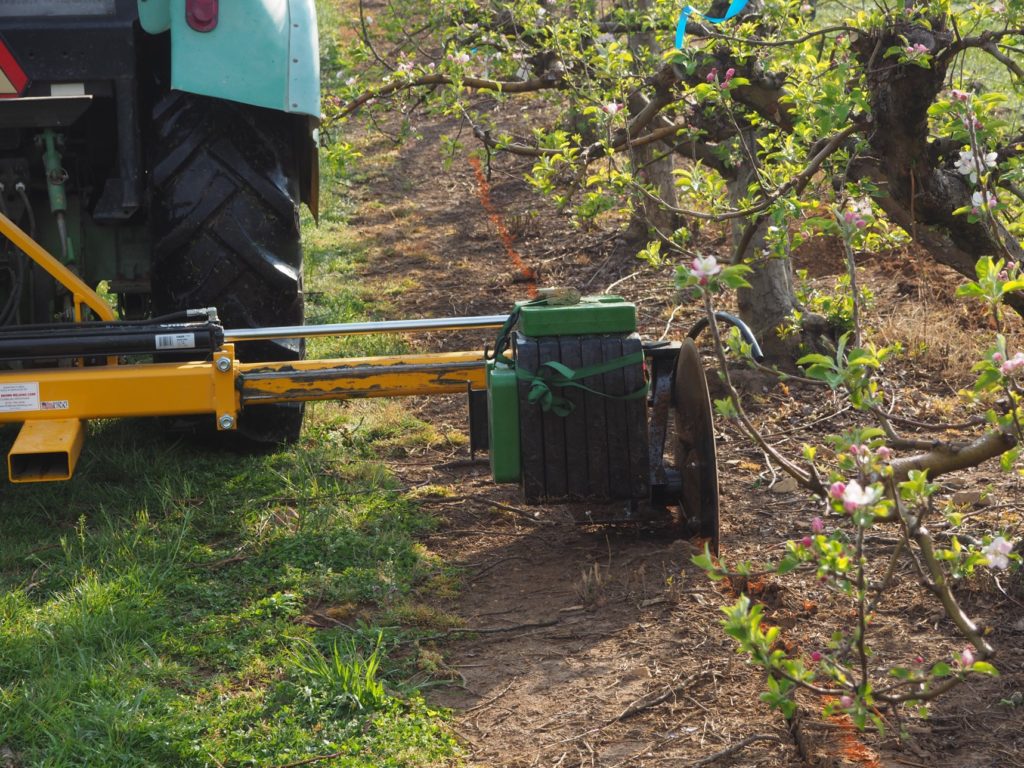Prohexadione Calcium to Manage Tree Vigor
go.ncsu.edu/readext?671678
en Español / em Português
El inglés es el idioma de control de esta página. En la medida en que haya algún conflicto entre la traducción al inglés y la traducción, el inglés prevalece.
Al hacer clic en el enlace de traducción se activa un servicio de traducción gratuito para convertir la página al español. Al igual que con cualquier traducción por Internet, la conversión no es sensible al contexto y puede que no traduzca el texto en su significado original. NC State Extension no garantiza la exactitud del texto traducido. Por favor, tenga en cuenta que algunas aplicaciones y/o servicios pueden no funcionar como se espera cuando se traducen.
Português
Inglês é o idioma de controle desta página. Na medida que haja algum conflito entre o texto original em Inglês e a tradução, o Inglês prevalece.
Ao clicar no link de tradução, um serviço gratuito de tradução será ativado para converter a página para o Português. Como em qualquer tradução pela internet, a conversão não é sensivel ao contexto e pode não ocorrer a tradução para o significado orginal. O serviço de Extensão da Carolina do Norte (NC State Extension) não garante a exatidão do texto traduzido. Por favor, observe que algumas funções ou serviços podem não funcionar como esperado após a tradução.
English
English is the controlling language of this page. To the extent there is any conflict between the English text and the translation, English controls.
Clicking on the translation link activates a free translation service to convert the page to Spanish. As with any Internet translation, the conversion is not context-sensitive and may not translate the text to its original meaning. NC State Extension does not guarantee the accuracy of the translated text. Please note that some applications and/or services may not function as expected when translated.
Collapse ▲
Use of prohexadione calcium (Apogee or Kudos 27.5 WDG) can dramatically reduce shoot length of apple when used in a season-long program. Untreated shoots (left) vs. a season-long prohexadione calcium program (right).
I received multiple calls and e-mails regarding use of prohexadione calcium (P-Ca; Apogee or Kudos 27.5 WDG). Most of these inquires were related to managing bitter pit of ‘Honeycrisp’ apple with P-Ca. A team of research and extension faculty at Cornell University conducted multi-year studies and are recommending use of 6 oz. of Apogee or Kudos per 100 gallons of water at pink bud stage to reduce bitter pit incidence. Inexplicably, different rates (higher or lower), later timings, or split applications were either ineffective or seemed to exacerbate bitter pit development. This observation is surprising, as P-Ca is a dose dependent chemistry as it relates to shoot growth and development. So why/how does this work? The authors of the above publication indicate that, “the short answer is that the mode of action is not clear. We have collected and are in the process of analyzing additional data not reported here, and work will continue in 2019.”
Some of you are asking if I would recommend this management practice in the southeastern US. At present, I cannot endorse this recommendation as it has not been evaluated in the southeastern US or adjacent states and the mode of action is unclear. I can however, recommend use of prohexadione calcium (P-Ca) to manage tree vigor. Season-long P-Ca programs can be an effective strategy to manage vegetative growth of apple. Season long programs can: 1) reduce shoot length, 2) improve light distribution in the canopy (related to flower bud development and fruit quality), 3) increase fruit set (which can be a negative consequence), 4) improve pesticide coverage, and 5) reduce pruning costs. Additionally, early applications of P-Ca are an effective method to reduce shoot blight incidence.
2019 Trial: Managing vegetative growth with prohexadione calcium and root pruning
A trial was conducted at the Mountain Horticultural Crops Research and Extension Center in 2019 on excessively vigorous ‘Golden Delicious’/ ‘M.111’ trees. Treatments included an 1) untreated control, 2) root pruning (Figure 1.), and 3) a season long P-Ca program.
P-Ca applications began on 22 April and were continued on ~21 day intervals up to 8 July 2019. The first two applications were applied at 24 fl. oz./ 200 GPA and the remaining applications were at 16 fl. oz./ 200 GPA, for a season total of 96 fl oz/A (5 applications). Visible effects of P-Ca treatment were evident during the growing season, and factors influenced by P-Ca were evaluated at harvest and during dormancy (Figure 2).

Figure 2. Effect of season long P-Ca applications on vigor and shoot length. Untreated control (left) and P-Ca treated (right).
P-Ca increased yield by 49% compared to the untreated control (Table 1). This block had a relatively weak return bloom, so this was beneficial. Additionally, P-Ca treated trees had a higher crop density (# of fruit per unit trunk cross-sectional area) when compared to root-pruned trees. Since fruit set was increased, average fruit weight was reduced by 19% on P-Ca treated trees, relative to the control. This illustrates the need to utilize a more aggressive thinning program in blocks that are subjected to a season-long P-Ca program, in some instances.
Following harvest, we evaluated effects on shoot length, pruning weight, and pruning time (Table 2). P-Ca significantly reduced shoot length and the pruning weight. Specifically, P-Ca treated trees reduced shoot length by 44% and pruning weight by 63% compared to the control trees (Figure 3). There were no significant differences between treatments for time required for pruning.

Table 2. Effect of treatments on shoot length, pruning weight, and pruning time of ‘Golden Delicious’ in 2019.
P-Ca can be a useful tool for management of apple vegetative growth. Root pruning had no effect on any measured response. This may be due to the distance of the root pruner from the trunk (2 ft). The goal with root pruning is to remove >50% of the root volume, as apple trees have a phenomenal ability to compensate for significant root mass reductions. Apparently, our root pruning treatments did not remove enough root mass to be effective. Future work will be done to evaluate more severe root pruning treatments on vegetative growth and development of apple.
Additional P-Ca Application Information:
See page 84 and 85 in the 2020 Integrated Orchard Management Guide for Commercial Apples in the Southeast.
|
Goal |
Chemical |
Rate and Time of Application |
|
To reduce vegetative growth, and to reduce later season tree canopy volume and density to improve pesticide efficiency. To suppress fire blight shoot blight.
|
Prohexadione calcium (Apogee or Kudos) |
3 to 12 oz + 1 pt nonionic surfactant per 100 gal. Use of a water conditioner is recommended with hard water. Do not apply later than 45 days before harvest.1 With early maturing cultivars such as Gala, a postharvest application may be necessary for season-long growth control. Apply as a sequential biweekly application beginning at 1- to 2-inch shoot growth using 6 oz/100 gal, or apply as sequential monthly applications beginning at 1 to 2 inches of shoot growth using 6 to 10 oz/100 gal. (See below table for application options.) Do NOT tank mix with calcium chloride or calcium nitrate or boron. Apogee can be tank mixed with pesticide cover sprays. |
| 1Maximum allowable use rate per season is a total of 99 ounces per acre. | ||
| Application Options for Prohexadione Calcium in the Southeast | |||||||
|
Tree Vigor (relative to crop load, rootstock, and cultivar vigor) |
Weeks after 1” to 2” of terminal growth (approx. PF)1 | ||||||
|
0 |
2 |
4 |
6 |
8 |
10 |
12 |
|
|
Moderate vigor |
3 oz2 | 3 oz | 3 oz | 3 oz | |||
| or 6 oz | Ca3 | 6 oz | Ca | ||||
|
High vigor |
3 oz | 3 oz | 3 oz | 3 oz | 3 oz | 3 oz | |
| or 6 oz | Ca | 6 oz | Ca | 6 oz | Ca | ||
|
Excessive vigor |
3 oz | 3 oz | 3 oz | 3 oz | 3 oz | 3 oz | 3 oz |
| or 6 oz | Ca | 6 oz | Ca | 6 oz | Ca | 6 oz | |
|
Crop loss |
3 oz | 3 oz | 3 oz | 3 oz | 3 oz | 3 oz | 3 oz |
| or 6 oz | 6 oz | 6 oz | 6 oz | ||||
|
1Application sequences must start at 1 to 2 inches of new growth extension for effective response. 23 or 6 oz/100 gal rates must be adjusted to rate per acre based on TRV of each orchard being treated. 3Ca: Calcium nitrate, calcium chloride, or boron sprays cannot be tank-mixed with prohexadione calcium. |
|||||||





